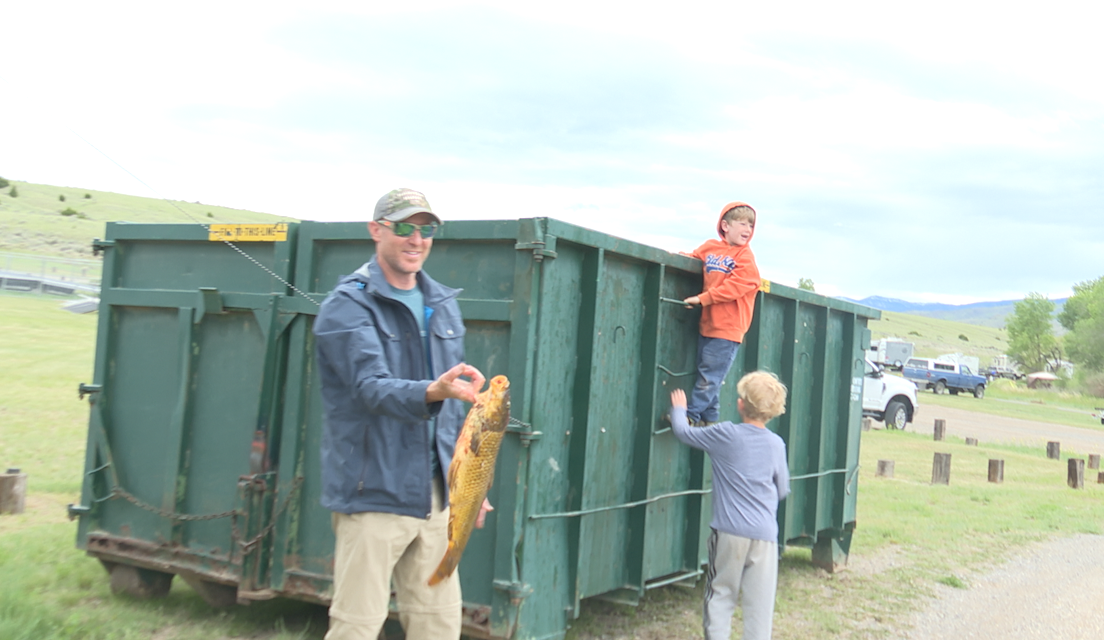HELENA — Saturday the Montana Bowhunters Association held their annual Carp Safari at Canyon Ferry Lake. And while they’re not bowfishing for a big cash prize, the tournament serves as a get together for the organization and also helps the Montana Department of Fish, Wildlife and Parks cut down on carp numbers in the lake.
“We make room for the native fish that were kind of here first. And then you know, they get back, they go back into the ecosystem. Either way you look at it. When we're not having an event here and folks are just here bowfishing, typically, they leave the fish on the bank or they throw them in the dumpster or they leave them in the water. I would say the fish that were left here last night, you know, people have been bowfishing the whole weekend. They're gone today, the scavengers eat them and they disappear. So I think it's tough for some people to understand that. But in the end, I think we're doing a good thing and it's a great get together for our folks and to introduce people to the sport of bowfishing,” Kevin Robinson, event organizer and Montana Bowhunting Association board member said.

According to usbr.gov, Canyon Ferry reservoir was 12 feet below normal pool levels on Saturday, which allowed bowhunters to shoot from the shoreline.
“From what I've heard, this is the lowest people have seen in a long time for this time of year. The way I look at it is there's the same amount of carp in here. So in less water, the accessibility is greater. There's more shoreline, there's more shallow areas for folks who are bowfishing, that are wade fishing, and don't have a boat. If the water was higher, they wouldn't be here,“ Robinson said.
Robinson recommends shallower water for easier carp shooting, as many factors go into successfully spearing a carp.
“Knee deep water, two to three feet deep, the deeper you go, the harder they are to hit because of the refraction of the water, the fish appears to be higher in the water column then than they actually are. So you aim lower than them. So if the fish is 10 feet away, and it's in two feet of water, you're going really low, it's really challenging. I mean, you're gonna, for every fish, you shoot, you probably shoot 50 times, I mean for fish that are further away. So it's definitely sporting,” he said.

Since carp shooting requires shooters to draw their bows so frequently, a lighter poundage bow is recommended. However, you’ll want a heavier, fiberglass arrow to help penetrate the water.
“You don't need a heavy draw, but you do need enough to penetrate the water, right? So a couple things come into play. You want to penetrate the water with those heavy arrows, but you're going to be strong and shoot hundreds and hundreds of times in a day. You know, the winning team right now they've shot 162 fish, so they've at least drawn their bow 162 times. And they've most likely drawn their bow 1,000 times. So it's just, you know, if you have a heavy poundage bow you're gonna penetrate the water better, maybe shoot deeper fish, but in the end, it's smart to have a lighter poundage bow and just, you know, be more accurate and more choosy with your shots.”




